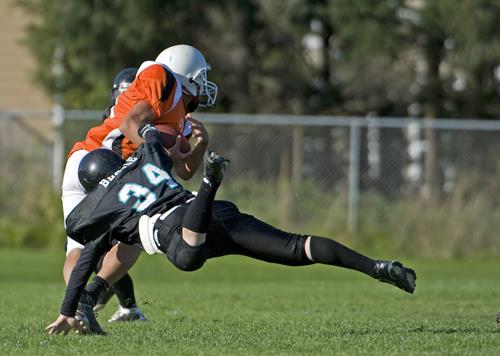 On May 29, 2018, 19-year-old Jordan McNair attended an outdoor football practice at the University of Maryland with his entire future ahead of him. Two weeks later, he died in the hospital. Members of the Maryland football coaching staff are now under investigation for failing to adequately handle the situation, leading to the likely preventable death of this young man.
On May 29, 2018, 19-year-old Jordan McNair attended an outdoor football practice at the University of Maryland with his entire future ahead of him. Two weeks later, he died in the hospital. Members of the Maryland football coaching staff are now under investigation for failing to adequately handle the situation, leading to the likely preventable death of this young man.
Reports indicate that many people at the practice noticed McNair showed signs he was having difficulties finishing a sprint set, including “hyperventilating” and “convulsions” on the field. Based on these observations, coaches and staff should have obviously realized the young man needed medical attention and should have called for help.
Instead, evidence shows that they brought him inside the athletic facility to cool him down, but failed to ice him down properly. After an hour, the staff finally called 911 to report a player hyperventilating and having a possible seizure. When McNair reached the hospital—more than an hour later—his body temperature was still at 106 degrees. He passed away two weeks later at a Baltimore medical facility.
The Severe Dangers of Heatstroke
Many people fail to realize the potentially devastating effects of untreated heat illnesses. When someone begins to overheat and does not cool down, they can suffer heatstroke, which occurs when the body temperature reaches about 106 or higher. Heatstroke is a life-threatening condition that can become fatal when someone does not receive medical help.
Another heat-related risk for young athletes is dehydration. Severe dehydration can cause many complications, including:
- Shock
- Coma
- Severe brain damage
- Severe damage to organs including the kidneys and liver
- Death
When athletes must practice or play in the heat and do not receive the medical help they need, catastrophic injuries or wrongful death can result.
Liability of Coaches and Schools
Coaches have a duty to act in a manner that keeps players reasonably safe. This includes not pushing players beyond their limits, recognizing when players need medical help, providing them that help, and offering safe facilities and equipment.
Players face the greatest risk of heat illnesses when wearing heavy pads during hot, outdoor summer and fall football practices. Coaches cannot control the outdoor temperature. They should, however, recognize and make accommodations when the heat is a risk.
They should also know when a player needs help. If coaches think a player had a possible seizure on the field or showed signs of heat-related distress, they should call 911 as soon as possible to prevent devastating complications. If coaches negligently fail to abide by their duty to protect their players, and a player suffers unnecessary injuries or wrongfully dies as a result, the school should face full liability for the injuries or wrongful death.
Contact Our California Wrongful Death Attorneys to Discuss a Possible Claim
Negligent coaches place young athletes, who depend on their coach’s judgment for their safety, at particular risk of injury. Taking action against schools or large institutions is no easy task, and you need a highly respected injury firm on your side.
At Greene, Broillet & Wheeler, LLP, we regularly handle tough cases involving catastrophic injuries and wrongful death, and we regularly obtain multi-million-dollar settlements and verdicts for our clients—more than any other California law firm.
